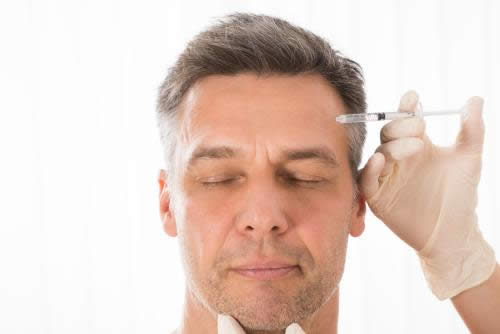
Aug 7, 2023 | Blog
BOTOX® is a well-known cosmetic treatment that has become increasingly popular in recent years. It is an injectable medication that is used to relax the muscles in the face, reducing the appearance of fine lines and wrinkles. The active ingredient in BOTOX® is botulinum toxin, which is a neurotoxin that temporarily paralyzes the muscles that cause wrinkles. BOTOX® is commonly used in cosmetic dermatology to treat wrinkles on the forehead, between the eyebrows, and around the eyes, such as crow’s feet. The treatment takes only a few minutes and involves a series of small injections. Results typically last for three to four months, after which the treatment can be repeated. One of the main advantages of BOTOX® is that it is a non-surgical option for reducing the signs of aging, making it a popular choice for those who want to improve their appearance without undergoing surgery. While BOTOX® is generally considered safe, there are some potential side effects to be aware of. These may include temporary bruising, redness, or swelling at the injection site. In rare cases, patients may experience headaches, nausea, or flu-like symptoms. In even rarer cases, patients may experience drooping eyelids or eyebrows, although this usually resolves on its own within a few weeks. It’s important to choose a qualified and experienced provider for your BOTOX® treatments, as this can help minimize the risk of side effects. Dr. Neily can also help you understand what to expect before, during, and after your treatment, and can answer any questions you may have about the procedure. Call us to schedule your BOTOX® appointment today.
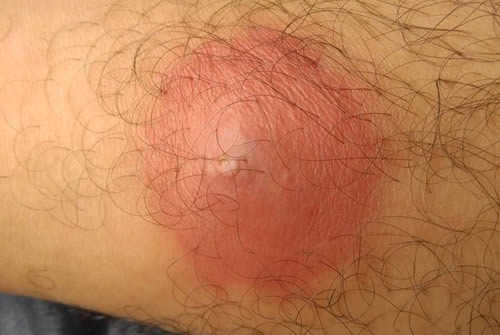
May 14, 2023 | Blog
Abscesses, commonly referred to as boils, are inflamed lumps that emerge beneath the skin and can be quite painful. These boils result from infections in hair follicles or oil glands. Boils can appear on any part of the body, but they are often found on the neck, face, buttocks, thighs, and armpits.
Causes of Boils
Boils are mainly caused by Staphylococcus aureus, a bacterium that usually resides on the skin and inside the nose, but can infiltrate the body through a wound or skin breakage. Other bacterial strains such as Streptococcus pyogenes can also cause boils. The risk factors for boils development include:
- Poor hygiene
- Diabetes
- Exposure to harsh chemicals
- Weakened immune system
- Friction from shaving or wearing tight clothes
- Certain medications like steroids
Symptoms of Boils
Boils commonly start as red, tender bumps that progressively grow in size within a few days. The sizes of boils can range from a pea size to a golf ball. They may be accompanied by a fever or feeling of general illness. As the boil expands, it may develop a yellow or white center, which is pus that has collected beneath the skin. The skin over the boil may also be tender and swollen.
Types of Boils
Various types of boils include:
- Furuncles: single boils that manifest on the skin and are often caused by Staphylococcus aureus.
- Carbuncles: clusters of boils that are typically more massive than furuncles and can cause significant pain. Carbuncles are also more likely to induce a fever or other systemic symptoms than furuncles.
- Cystic acne: deep, inflamed, and painful cysts that occur on the neck, face, chest, and back due to clogged hair follicles.
Treatments for Boils
Most boils tend to heal without treatment within several weeks. Nonetheless, some treatments can help to alleviate the pain and quicken the healing process. They include:
- Applying warm compresses to the affected area for several minutes multiple times a day.
- Taking over-the-counter painkillers such as acetaminophen or ibuprofen to reduce inflammation and alleviate pain.
- Keeping the affected region clean and dry to prevent further infection.
- Taking antibiotics if the boil is severe or there are multiple boils.
- In rare cases, a boil may need to be drained by a healthcare professional. This involves making a small incision in the skin and draining the pus out of the boil.
Preventing Boils
Several measures can be taken to prevent the development of boils, such as:
- Practicing good hygiene, such as washing hands frequently and showering after heavy sweating or exercise.
- Avoiding sharing personal items like towels, razors, or clothing.
- Avoiding tight-fitting clothes that can cause skin friction.
- Promptly treating any cuts or breaks in the skin with antiseptic to prevent infection.
Boils can be uncomfortable and painful, but they are usually not a serious cause for concern. Good hygiene practices and measures to prevent the development of boils can help to keep your skin healthy and infection-free. Most boils tend to heal on their own within a few weeks, but if the boil does not heal or you experience symptoms of a severe infection, it is important to seek medical attention. Contact Dr. Neily at our Venice dermatology office to schedule an appointment.

May 21, 2023 | Blog
Birthmarks are a common occurrence in newborns and are characterized by an overgrowth of skin pigment cells or blood vessels. While most birthmarks are benign, some may indicate an underlying medical condition. The exact cause of birthmarks is still unknown, although some factors may increase the likelihood of developing them, such as genetics and certain medical conditions.
There are two primary types of birthmarks: pigmented and vascular.
Pigmented Birthmarks:
Café-au-lait Spots: These spots are typically present at birth and are flat, light brown in color.
Mongolian Spots: These blue-gray patches of skin are typically found on the lower back or buttocks.
Moles: Moles are clusters of pigment cells and can vary in color, size, and shape.
Vascular Birthmarks:
Port-wine Stains: These red or purple birthmarks are caused by abnormal blood vessel growth.
Strawberry Hemangiomas: These raised, red birthmarks usually appear within the first few weeks of life.
Salmon Patches: These pink birthmarks are typically flat and can be found on the forehead, eyelids, or neck.
Treatment options for birthmarks depend on the type and severity of the birthmark. While most birthmarks do not require treatment and will fade over time, some may cause discomfort or be a sign of an underlying medical condition. Here are some common treatments for birthmarks:
Laser Therapy: This treatment uses lasers to target and destroy the blood vessels or pigment cells in the birthmark.
Surgery: In some cases, surgical removal may be necessary.
Medications: Certain medications can help to shrink or reduce the appearance of birthmarks.
It is important to consult with a dermatologist if you have concerns about a birthmark. Although most birthmarks are harmless, some may require treatment if they are causing discomfort or indicate an underlying medical condition. Dr. Neily, a board-certified dermatologist in Venice, Florida can provide expert guidance and care. Contact us today to schedule an appointment.
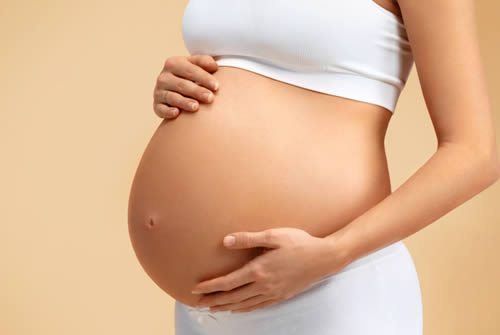
May 27, 2023 | Blog
Pregnancy is a time of joy and excitement for women, but it also brings about changes in the skin. Due to hormonal fluctuations, various skin conditions can arise during pregnancy that can be uncomfortable, painful, and irritating. Luckily, there are treatments available to alleviate these conditions, and a dermatologist can help with the process. Let’s take a look at some of the most common skin conditions during pregnancy and the recommended dermatology treatments for each.
Melasma:
Melasma is a skin condition that frequently occurs during pregnancy due to hormonal changes. Dark patches appear on the face, especially on the cheeks, nose, forehead, and upper lip. To treat melasma, dermatologists usually suggest topical creams containing hydroquinone, corticosteroids, or tretinoin. Other options include microdermabrasion, chemical peels, and laser therapy, which can reduce the visibility of dark spots.
Acne:
Hormonal changes during pregnancy can worsen acne. Dermatologists may suggest benzoyl peroxide or salicylic acid for topical treatment. Depending on the acne’s severity, other medications such as oral antibiotics or other prescription medicines may be prescribed.
Pruritic Urticarial Papules and Plaques of Pregnancy (PUPPP):
PUPPP is a common skin condition that appears during the third trimester of pregnancy. It creates red, itchy, and raised bumps on the skin, particularly on the thighs, abdomen, and buttocks. Antihistamines and topical steroids can help relieve PUPPP-related itching.
Papular Eruptions of Pregnancy:
Papular Eruptions of Pregnancy (PEP) is another common skin condition that occurs during pregnancy. It causes itchy red bumps to appear on the skin, usually on the arms, legs, and abdomen. Topical steroids, oral antihistamines, or UV light therapy are typical treatments for PEP.
Pemphigoid Gestationis:
Pemphigoid Gestationis (PG) is an autoimmune disorder that is rare but can develop during pregnancy. The skin develops itchy, blistering lesions that typically begin around the belly button and can spread to other areas of the body. Treatment involves the use of topical and/or oral steroids to reduce inflammation and suppress the immune system.
Intrahepatic Cholestasis:
Intrahepatic Cholestasis of Pregnancy (ICP) is a liver disorder that occurs during pregnancy. It causes intense itching on the hands and feet and can be associated with jaundice. Doctors generally prescribe medications to relieve itching and monitor liver function. Delivery may also be suggested, as the condition can worsen in the later stages of pregnancy.
If you’re suffering from any of these skin conditions during pregnancy, it’s essential to consult with a dermatologist. Dr. Neily in Venice, Florida is available to diagnose the condition and recommend the best treatment options to ensure the health of both you and your baby. Contact us today!
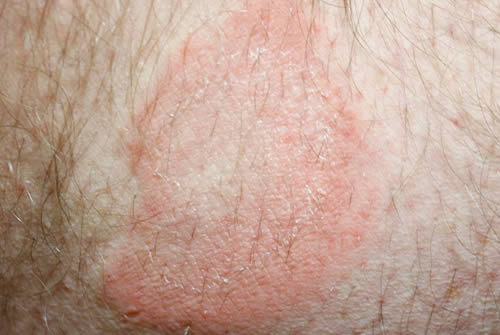
Jun 7, 2023 | Blog
Granulomas refer to small areas of inflammation that develop in response to irritants, infections, or foreign substances in various tissues of the body. These clusters of immune cells, such as macrophages, gather together to contain the irritant. In this article, we’ll take a closer look at the symptoms, causes, types, and treatments of granulomas.
Causes of Granulomas
Several factors can lead to the formation of granulomas, including infections, inflammation, autoimmune diseases, and exposure to foreign substances. Some of the most common causes of granulomas include:
- Infections such as tuberculosis, fungal infections, and leprosy
- Autoimmune diseases such as Crohn’s disease and sarcoidosis
- Exposure to foreign substances such as talcum powder or silicone
- Chronic inflammation due to conditions such as rheumatoid arthritis or inflammatory bowel disease
Symptoms of Granulomas
The symptoms of granulomas may vary depending on the location and cause of the granuloma. In some cases, they may not cause any symptoms at all. However, common symptoms of granulomas include:
- Bumps or lesions on the skin
- Fatigue
- Coughing
- Shortness of breath
- Joint pain or stiffness
- Weight loss
- Abdominal pain or discomfort
Types of Granulomas
There are several types of granulomas, which include:
- Tuberculoid granulomas: Caused by tuberculosis or other mycobacterial infections and characterized by a central area of caseation necrosis surrounded by immune cells.
- Foreign body granulomas: Develop in response to foreign substances that cannot be broken down by the body, such as talcum powder or silicone.
- Sarcoid granulomas: Characteristic of sarcoidosis, an autoimmune disease where immune cells cluster together in organs like the lungs, lymph nodes, and other areas.
- Granulomatous vasculitis: An inflammatory condition that affects blood vessels, leading to the formation of granulomas around vessel walls.
Treatments for Granulomas
The treatment of granulomas depends on the underlying cause and severity of symptoms. Treatment options include:
- Antibiotics or antifungal medication for infections
- Steroids or immunosuppressive medication for autoimmune diseases
- Surgical removal of foreign bodies
- Injections of corticosteroids into the affected area to reduce inflammation and promote healing
In some cases, granulomas may not require treatment and may go away on their own. If you have symptoms of a granuloma, it is important to seek medical attention to determine the underlying cause and appropriate treatment plan. Call our Venice office and schedule an appointment with Dr. Neily today!
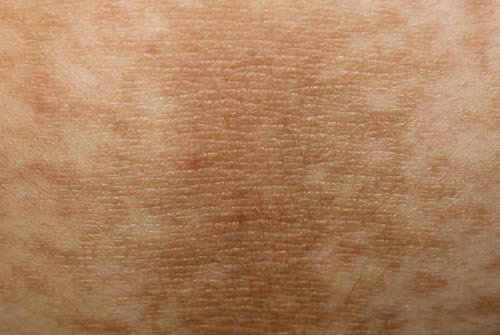
Jun 14, 2023 | Blog
Acanthosis nigricans is a skin condition characterized by the presence of dark, velvety patches on the skin, typically found on the neck, armpits, groin, and other skin folds. The patches may also appear on the hands, elbows, knees, or face. The affected skin is often thick, rough, and itchy. This condition affects both men and women of any age, although it is more prevalent in those who are overweight, have insulin resistance or type 2 diabetes.
The main cause of acanthosis nigricans is an increase in insulin levels. High insulin levels can stimulate skin cell growth and trigger melanin production. Obesity, insulin resistance, type 2 diabetes, hormonal disorders such as polycystic ovary syndrome, or certain medications can contribute to the increase in insulin levels that cause acanthosis nigricans.
The symptoms of acanthosis nigricans include the presence of dark, thick, velvety patches of skin on the neck, armpits, groin, and other skin folds. The skin may feel rough and itchy, and in some cases, may emit a foul odor.
There are different types of acanthosis nigricans, including type 1, which occurs in people with insulin resistance, usually due to obesity or type 2 diabetes, type 2, which occurs in people who do not have insulin resistance or diabetes but have a genetic predisposition to the condition, and drug-induced, which occurs as a side effect of certain medications.
While there is no specific cure for acanthosis nigricans, treatment options are available. Treating the underlying cause, such as losing weight and improving blood sugar control for people with insulin resistance or type 2 diabetes, can help improve the condition. Medications or topical treatments may be prescribed to help reduce the appearance of the patches. Dermabrasion, laser therapy, and chemical peels are also used to improve the appearance of affected skin.
Preventing the development of acanthosis nigricans includes maintaining a healthy weight, exercising regularly, and eating a healthy diet. Managing any underlying medical conditions, such as diabetes or hormonal disorders, can also help prevent the condition. If you notice any changes in your skin, especially in the skin folds, consult with Dr. Neily at Coast Dermatology for an early diagnosis and treatment to prevent the condition from getting worse.






